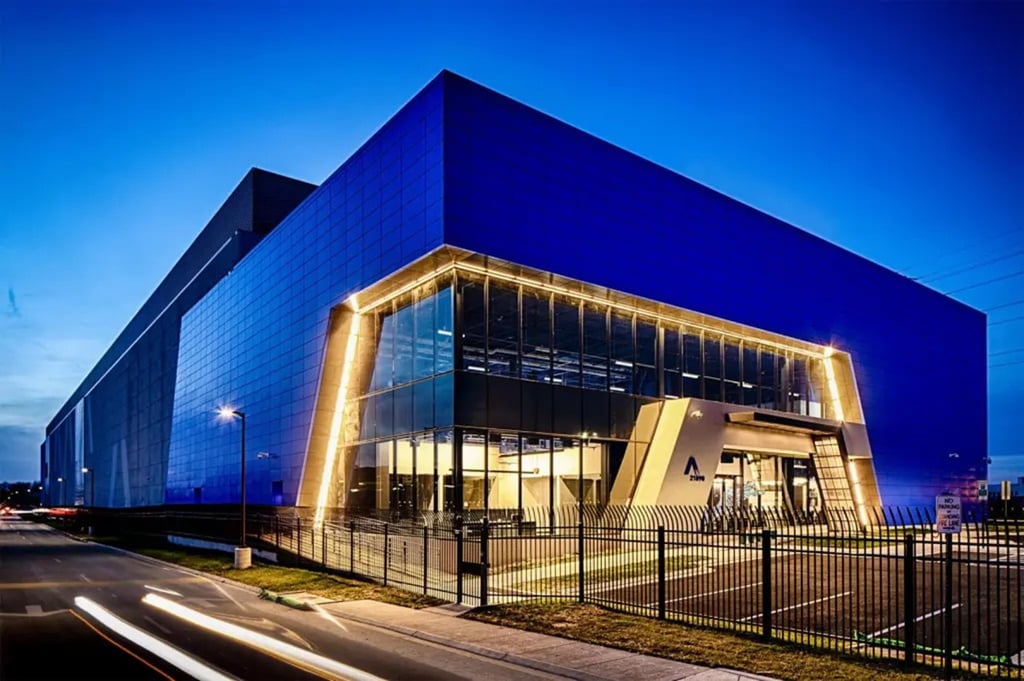Datamation content and product recommendations are
editorially independent. We may make money when you click on links
to our partners.
Learn More
I’m at the EMC annual analyst conference this week and this year it came right after VCE changed from being a joint venture to becoming a wholly owned subsidiary of EMC. Structurally unchanged inside, its ownership and future took a solid shift to the future – and the future of this IT in a box product is looking very interesting.
Let’s talk about that a bit this week.
Expansion and Flexibility
VCE works best at the large scale enterprise level and the Vblock is locked in on the components currently supplied by EMC, VMware, and Cisco. However, this whole thing is based on a “black box” concept. In other words, if it is working properly, the folks installing the solution shouldn’t care what is inside the box as long as the solution meets or exceeds the specifications it was sold on.
Now stop and think about this a moment because it really forces a very different way of looking at things. Currently you care about the different components in your datacenter because, unless you have converted to Vblocks, you specify and configure each component yourself and you may even care about the sub-components like storage type, processor, and even chipsets.
As a result you own the responsibility for making sure the result performs as expected. But in a “black box” configuration you set the specification and the vendor supplying the solution then configures it to meet that specification. They own the result and are held accountable for it, not you. You are only responsible for what you should know best, what you need. They are responsible for what they know best: the hardware configuration. And there are a lot of components available to better meet the various needs of the vastly varied technology world market.
So while Vblocks will largely have the same components, expect other “blocks” to emerge targeting other needs, smaller corporate needs (including branch offices), and emerging opportunities like hybrid clouds, which could require configurations in the future that don’t currently exist.
In short, this organizational change anticipates new additional product configurations, sales channels, and partners, which will expand the solution to more customers and markets than VCE now can address.
Analytics in Ordering
One of the interesting advancements that you’ll see out of VCE is in ordering, and it will take a couple years to fully mature. Their intention is both interesting and eventually amazing.
They plan to use analytics not just to figure out better ways to sell you products, which is how it is generally used by most today, but how to help you configure VCE solutions quickly and accurately. They are trying to make VCE buying like buying a product on Amazon. To do this they have to collect information about the various industries and companies that might consider buying VCE from all of the EMC federated companies. So that when you start the process a system is pre-configured to take you through what you need and minimize the various elements you have to enter to set the ideal configuration. These things include the applications you plan to run, your company’s size and expected growth rate, in place SLA (Service Level Agreements), and existing hardware and configuration.
From this you get a complete solution that can be built and put into full production faster than you can currently order and then drive a new Tesla car. While, given the level complexity, it is unlikely it will ever be as easy as ordering a Tesla, they are setting goal that should get them pretty close. And the fact they can deliver now a working solution faster than Tesla can deliver a car is pretty amazing.
The Next Generation of IT Company
In a way I think we are seeing in VCE something similar to what we saw in Dell in the 1990s. The emergence of the next generation of IT Company. The result is already very different than what we see with other firms: an extreme focus on the solution and not on the components, a configure-to-implementation time that is so fast as to be nearly unbelievable, and eventually a configuration process that is closer to what you’d see buying cutting edge car from a cutting edge car company than any IT company ever in existence. I expect VCE will drive a revolution much like Dell, did and it will be an amazing thing to watch.
Photo courtesy of Shutterstock.
-
Ethics and Artificial Intelligence: Driving Greater Equality
FEATURE | By James Maguire,
December 16, 2020
-
AI vs. Machine Learning vs. Deep Learning
FEATURE | By Cynthia Harvey,
December 11, 2020
-
Huawei’s AI Update: Things Are Moving Faster Than We Think
FEATURE | By Rob Enderle,
December 04, 2020
-
Keeping Machine Learning Algorithms Honest in the ‘Ethics-First’ Era
ARTIFICIAL INTELLIGENCE | By Guest Author,
November 18, 2020
-
Key Trends in Chatbots and RPA
FEATURE | By Guest Author,
November 10, 2020
-
Top 10 AIOps Companies
FEATURE | By Samuel Greengard,
November 05, 2020
-
What is Text Analysis?
ARTIFICIAL INTELLIGENCE | By Guest Author,
November 02, 2020
-
How Intel’s Work With Autonomous Cars Could Redefine General Purpose AI
ARTIFICIAL INTELLIGENCE | By Rob Enderle,
October 29, 2020
-
Dell Technologies World: Weaving Together Human And Machine Interaction For AI And Robotics
ARTIFICIAL INTELLIGENCE | By Rob Enderle,
October 23, 2020
-
The Super Moderator, or How IBM Project Debater Could Save Social Media
FEATURE | By Rob Enderle,
October 16, 2020
-
Top 10 Chatbot Platforms
FEATURE | By Cynthia Harvey,
October 07, 2020
-
Finding a Career Path in AI
ARTIFICIAL INTELLIGENCE | By Guest Author,
October 05, 2020
-
CIOs Discuss the Promise of AI and Data Science
FEATURE | By Guest Author,
September 25, 2020
-
Microsoft Is Building An AI Product That Could Predict The Future
FEATURE | By Rob Enderle,
September 25, 2020
-
Top 10 Machine Learning Companies 2021
FEATURE | By Cynthia Harvey,
September 22, 2020
-
NVIDIA and ARM: Massively Changing The AI Landscape
ARTIFICIAL INTELLIGENCE | By Rob Enderle,
September 18, 2020
-
Continuous Intelligence: Expert Discussion [Video and Podcast]
ARTIFICIAL INTELLIGENCE | By James Maguire,
September 14, 2020
-
Artificial Intelligence: Governance and Ethics [Video]
ARTIFICIAL INTELLIGENCE | By James Maguire,
September 13, 2020
-
IBM Watson At The US Open: Showcasing The Power Of A Mature Enterprise-Class AI
FEATURE | By Rob Enderle,
September 11, 2020
-
Artificial Intelligence: Perception vs. Reality
FEATURE | By James Maguire,
September 09, 2020
SEE ALL
DATA CENTER ARTICLES







